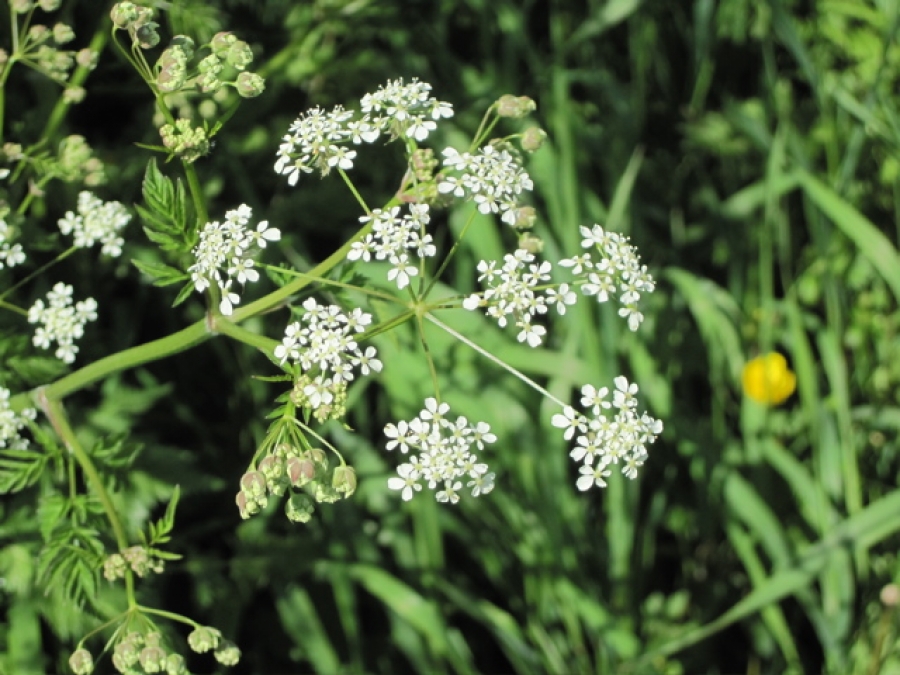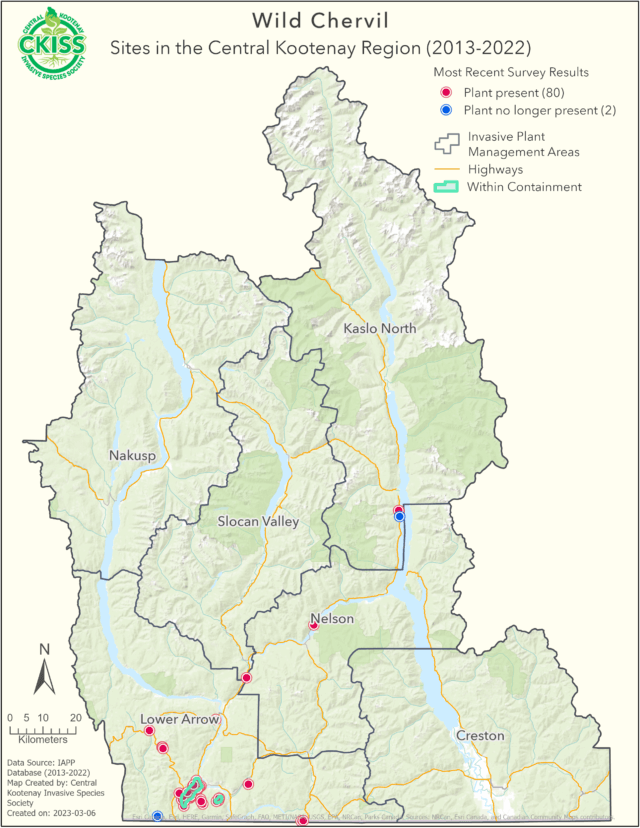Anthriscus sylvestris
Description
- Herbaceous perennial that grows up to 1m in height
- Stems are hollow and pubescent
- Alternately arranged, compound, fern-like leaves
- Small flowers are white, bloom in umbels (umbrella shaped clusters) and have 5 notched petals
- Blooms from May – June

Consequences of invasion
- Grows aggressively, outcompeting native vegetation
- Its height and density allow it to cover other species in the shade, preventing photosynthesis
- Outcompetes forage available to wildlife and is not palatable to them
- Host to yellow fleck virus which affects agricultural crops including carrots, parsnips and celery.
Status in the CKISS region
- Wild chervil is classified as Contain on the CKISS Annual Priority List.
- It has been found in the Kaslo, Nelson, and Lower Arrow Invasive Plant Management Areas (IPMAs), but is not known to be in other IPMAs in the region.
- The goal is to contain the species within Containment Areas inside the Lower Arrow and Kaslo IPMAs, and to prevent it from spreading to new areas.
- If you notice this plant growing outside of its containment areas, please report it!
- To learn more about how CKISS classifies and manages invasive species, see our Invasive Species Priority Lists page.
Integrated pest management options
- Hand pulling or digging are possible but the plants have deep, thick taproots which make removal difficult.
- Mature plants must be removed below the crown to prevent re-sprouting
- Mowing is not as effective as plants may grow new flowers below the height of the mower, but consistent mowing of several years may help to control the plant.
- Chemical treatment is often not an option as the plant is commonly found in wet areas where this is not permitted.
- Cut and bag flowering plants and dispose them at your local landfill
- Choose wildflower seed mixtures carefully
- Become PlantWise to prevent introducing wild chervil in your garden.


